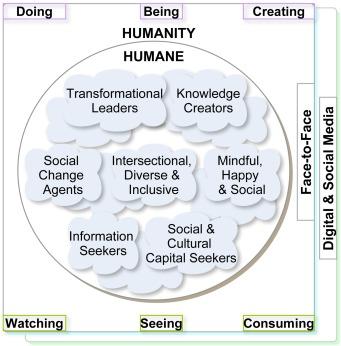Unlocking Global Innovation: How International Collaborations Are Transforming Educational Technology
Introduction: The Global Pulse of Educational Technology
In today’s interconnected world, educational technology (edtech) is evolving faster than ever before—thanks largely to the dynamic force of international collaborations. Institutions, startups, and governments are joining hands across borders to tackle challenges, share expertise, and co-create innovative digital learning tools. This unprecedented global synergy is transforming how educators teach, students learn, and communities thrive. In this article, we’ll explore how global partnerships are unlocking new potential in educational technology, spotlight impactful case studies, and share practical tips for successful international edtech collaborations.
Why International Collaboration Matters in Educational Technology
International collaboration offers a unique avenue for education leaders, edtech developers, and policymakers to embrace diversity and accelerate innovation. By connecting minds from different cultures, backgrounds, and expertise, global partnerships in educational technology yield a range of benefits:
- Access to Diverse Ideas: Collaborators from different regions bring fresh perspectives that fuel creative problem solving.
- Resource Sharing: International partners can share valuable resources—such as funding, technology infrastructure, and curriculum frameworks.
- Scalable Solutions: Solutions tested and co-developed in varied settings are more likely to scale globally and adapt to diverse learning needs.
- Research and Progress: Cross-border R&D fosters rapid prototyping, pilot programs, and evidence-based approaches to edtech products.
- Global Impact: Joint projects can address large-scale educational challenges, such as digital inclusion, teacher training, and accessible online learning.
Example: UNESCO’s Global Education Coalition unites more than 175 members across governments, tech companies, and NGOs to improve remote learning access for millions of students worldwide.
Transformative case Studies: Global EdTech Partnerships in Action
The EdTech Hub: Bridging the Global Digital Learning Divide
The EdTech Hub, funded by the UK and World Bank, is an international research collaboration working with countries like Tanzania, Sierra Leone, and Bangladesh.By sharing research expertise and digital resources, the EdTech Hub helps governments deploy scalable technology solutions and monitors the effectiveness of e-learning initiatives. Their impact motivates other nations to invest in collaborative educational technology projects.
Google’s Learning Partnerships in Asia-Pacific
Google has forged strategic alliances with ministries of education across countries including India, Indonesia, and Japan. Through joint workshops, grant programs, and co-developed curricula, Google empowers teachers and students to leverage the latest edtech tools, such as Google Classroom and Chromebooks, ultimately advancing digital readiness in classrooms worldwide.
Open Educational Resources: The European Schoolnet Model
European Schoolnet is a network of 34 European Ministries of Education working to create, test, and disseminate Open Educational Resources (OER) for STEM subjects. Their cross-border approach encourages joint teacher training and collaborative curriculum design, inspiring similar initiatives globally.
Benefits of International edtech Collaboration
The practical benefits of partnering across borders to innovate in educational technology are measurable and wide-ranging:
- Improved Student Outcomes: Cross-pollinated innovations offer adaptive learning experiences that cater to diverse levels and backgrounds.
- Faster Technology adoption: collaborations streamline pilot testing and user feedback, resulting in quicker market entry for edtech products.
- Robust Teacher Training: Joint training programs upskill teachers on effective technology integration, supporting continuous professional growth.
- Cost-Efficiency: collaborative funding and resource pooling reduce development and deployment costs for new technology platforms.
- Global Brand Recognition: Successful international projects boost the visibility and credibility of edtech companies and institutions.
First-Hand Experience: A Digital Educator’s Perspective
“Being a part of an international edtech project opened my eyes to new teaching strategies and technologies I never knew existed. Collaborating with educators from Japan and Finland while launching our blended learning pilot helped our school customize digital tools for our local context, while contributing ideas that the global community could learn from.”
– Maria Lopez, Education technologist, Spain
Stories like Maria’s illustrate how international partnerships empower teachers and boost student motivation, creating a ripple effect of positive change in education systems worldwide.
Practical Tips for Successful International EdTech partnerships
- Define Common Goals: Align on shared objectives and desired outcomes from the beginning to maximize synergy.
- foster Open Interaction: Use collaborative platforms and regular meetings to bridge cultural differences and ensure clear messaging.
- Respect Local Contexts: Customize technology and content to meet the unique needs of each locale involved in the partnership.
- Prioritize Data Privacy: Develop mutual policies for data security, privacy, and responsible technology use.
- Monitor and Evaluate: Set up key performance indicators and feedback mechanisms to track progress and refine strategies.
Challenges and How to Overcome Them
While international edtech collaborations promise exciting outcomes, they can come with challenges:
- Language Barriers: Use translation tools and hire bilingual team members.
- Regulatory Differences: Consult local legal experts and adapt solutions to comply with global policies, such as GDPR.
- Time Zones and Logistics: leverage project management software to coordinate across regions efficiently.
- Resource Disparity: Design scalable pilot programs that are accessible to under-resourced partners.
With careful planning, cultural sensitivity, and robust digital infrastructure, these obstacles become opportunities for deeper learning and more resilient technology solutions.
Looking Ahead: The Future of Global EdTech Innovation
As technology and education continue to evolve, the need for fruitful global collaborations in educational technology will only grow.Expect to see more AI-powered learning platforms, data-driven student analytics, and immersive virtual classrooms designed by cross-border teams.
- The rise of EdTech accelerators dedicated to international startups
- Increased investment and public-private partnerships for global digital learning projects
- Global standards for educational data privacy and interoperability
The future belongs to those who reach across continents and industries to unlock the full power of digital learning. By fostering strong international bonds, stakeholders in educational technology can deliver impactful, equitable, and innovative solutions for generations to come.

